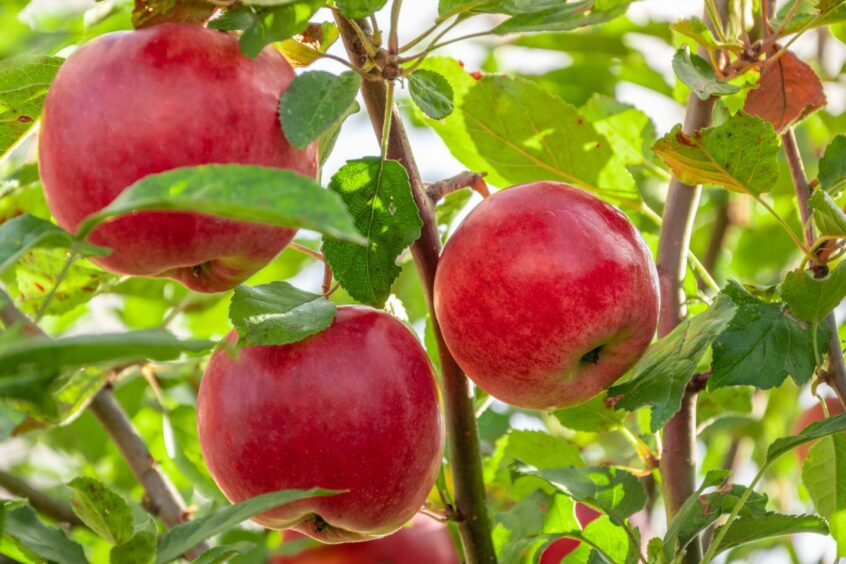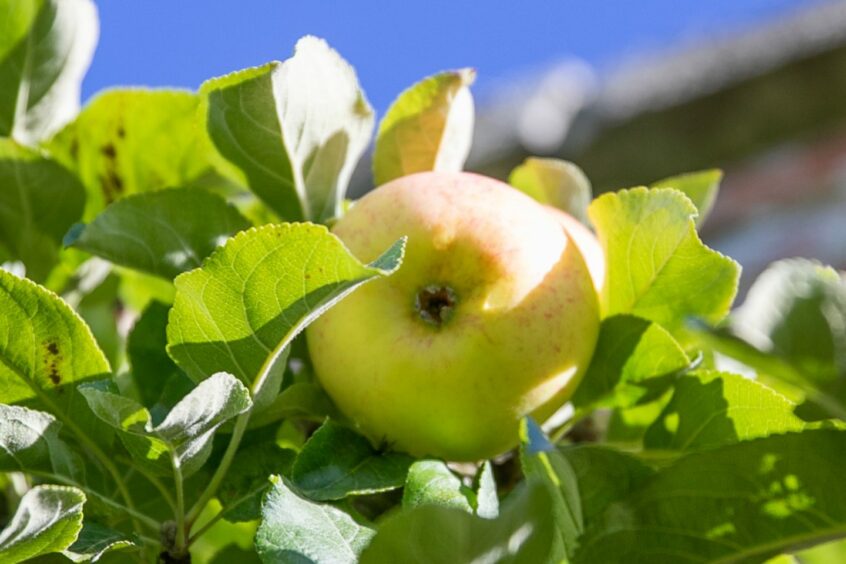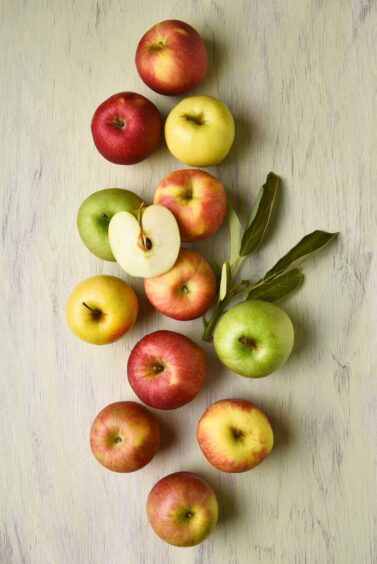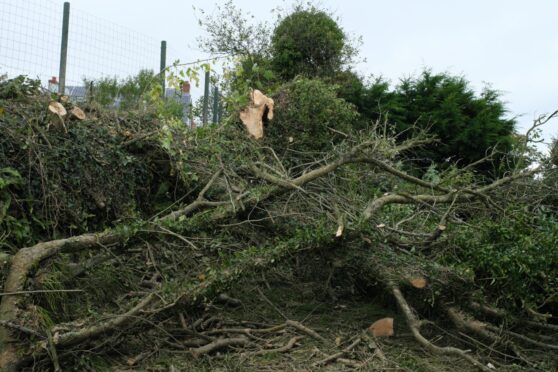I enjoyed my first picking off the apple tree this week.
It’s the variety ‘Discovery’, the skin is a creamy-white colour turning a brilliant crimson-red where the sun has shone on it.
This will have been helped by the summer pruning carried out on the apple trees a few weeks back, trimming back this years growth on the branches of the pyramid trained trees.
What are the benefits of summer pruning?
This allows more light into the fruits which helps them to ripen and also helps stimulate the buds that remain to produce fruiting buds for next year.
Not going to lie, ‘Discovery’ has got a nice flavour but I wouldn’t say it’s one of my favourite eating apples.
What does make it taste so much better is knowing that this is is the start of me enjoying eating my own, home-grown apples again.
Over the next weeks and months I can enjoy numerous different apple varieties and take a few months break from the same old found all year round in the supermarkets.
My taste buds can be revitalised!
Once again this apple tree has gifted me with a great crop, all the branches being covered head to toe in fruits.
It never seems to let me down in this way.
However as I look around the rest of the trees in my mini orchard, the same cannot be said this year.
Why have other orchard trees struggled?
Jupiter, Sunset, Charles Ross, Howgate Wonder and Grenadier are just some that did well for me in 2022.
Actually, I would even go as far to say I had a bumper crop but not so this year which could be down to a few reasons.
Maybe they’ve tired themselves out, working so hard last year that they’ve needed a break, not having enough energy to produce so many apples.
This unproductive season could also have come from poor weather a few months back when the trees were in flower.
I seem to recall May being cool and grey, plants in the glasshouse were just not getting the temperatures or sunlight hours to grow.
This could also have had an effect on pollinator activity.
We ourselves are not exactly full of beans and energy during such weather and neither are the insects we need to fertilise the flowers and so give us apples.
Need to shut down and conserve energy
You may sometimes think us gardeners who have the privilege to be in the media are being all goody two shoes and preaching on the need to avoid using chemicals, or encouraging you to giving up a wee bit of your lawns for longer grass so to provide food and shelter for wildlife in our gardens.
We’re not, we just want you to understand just how much we rely on them to grow successful crops.
Our woody plants, the trees and shrubs in our gardens, streets, parks and countryside all around us, also need a period of cold weather over the winter months, to shut down fully and conserve their energy.
That’s what they are tuned to do and so with these milder winters we now experience and the temperature not going below six degree centigrade the plant will still be quietly working away when it should be taking it easy.
That’s the joy of gardening having to grow plants with all the challenges Mother Nature throws at us.
But it’s also overcoming them that make those bites into a fruit or veg grown by our own hands in our own soil, so much the more satisfying.
‘Early varieties’ need eaten straight away
These first ripening apples of the season during August and September are known as ‘early varieties’.
They don’t have the qualities needed to be able to kept in store so need eaten straight away.
Though ‘Discovery’ apples when kept in the fridge could keep up to a week.
Mid and late season varieties are ready from October, possibly still hanging on the tree November and December if the weather is not too cold.
If you have the space these later ripening fruits can be stored in a cool and dark, frost free place.
If you can achieve the right conditions they may even keep until April, meaning you can be using your own apples for making pies and crumbles right through the winter. You should only try and store apples that are free from any damage on the skin and those that still have the stalk attached so pick carefully from the tree.
Rotting apples – and need for air
Damaged apples will be the first to start rotting and can quickly spread to those around it.
Like keeping our plants healthy when growing in the veg plot or herbaceous border, allowing air to circulate will also help reduce this risk.
Best practise is to individually wrap your apples that you wish to store to protect them.
But I don’t have the time for this, especially as they need to be inspected at least once a week to keep them in good health.
Saw a picture where newspaper have been folded and placed between apples in store as a divider.
They were then placed in a open sided plastic crate so this could be a compromise worth trying for me this year.
















Conversation